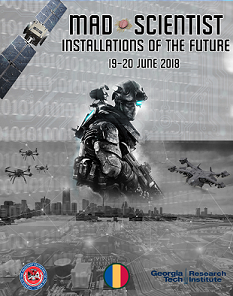 On 19-20 June 2018, the U.S. Army Training and Doctrine Command (TRADOC) Mad Scientist Initiative co-hosted the Installations of the Future Conference with the Office of the Assistant Secretary of the Army for Installations, Energy and Environment (OASA (IE&E)) and Georgia Tech Research Institute (GTRI). Emerging technologies supporting the hyper-connectivity revolution will enable improved training capabilities, security, readiness support (e.g., holistic medical facilities and brain gyms), and quality of life programs at Army installations. Our concepts and emerging doctrine for multi-domain operations recognizes this as increasingly important by including Army installations in the Strategic Support Area. Installations of the Future will serve as mission command platforms to project virtual power and expertise as well as Army formations directly to the battlefield.
On 19-20 June 2018, the U.S. Army Training and Doctrine Command (TRADOC) Mad Scientist Initiative co-hosted the Installations of the Future Conference with the Office of the Assistant Secretary of the Army for Installations, Energy and Environment (OASA (IE&E)) and Georgia Tech Research Institute (GTRI). Emerging technologies supporting the hyper-connectivity revolution will enable improved training capabilities, security, readiness support (e.g., holistic medical facilities and brain gyms), and quality of life programs at Army installations. Our concepts and emerging doctrine for multi-domain operations recognizes this as increasingly important by including Army installations in the Strategic Support Area. Installations of the Future will serve as mission command platforms to project virtual power and expertise as well as Army formations directly to the battlefield.
We have identified the following “Top 10” takeaways related to our future installations:

1. Threats and Tensions. “Army Installations are no longer sanctuaries” — Mr. Richard G. Kidd IV, Deputy Assistant Secretary of the Army, Strategic Integration. There is a tension between openness and security that will need balancing to take advantage of smart technologies at our Army installations. The revolution in connected devices and the ability to virtually project power and expertise will increase the potential for adversaries to target our installations. Hyper-connectivity increases the attack surface for cyber-attacks and the access to publicly available information on our Soldiers and their families, making personalized warfare and the use of psychological attacks and deep fakes likely.
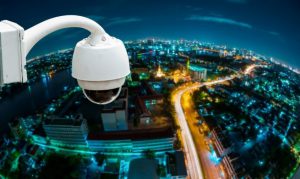 2. Exclusion vs. Inclusion. The role of and access to future Army installations depends on the balance between these two extremes. The connections between local communities and Army installations will increase potential threat vectors, but resilience might depend on expanding inclusion. Additionally, access to specialized expertise in robotics, autonomy, and information technologies will require increased connections with outside-the-gate academic institutions and industry.
2. Exclusion vs. Inclusion. The role of and access to future Army installations depends on the balance between these two extremes. The connections between local communities and Army installations will increase potential threat vectors, but resilience might depend on expanding inclusion. Additionally, access to specialized expertise in robotics, autonomy, and information technologies will require increased connections with outside-the-gate academic institutions and industry.

3. Infrastructure Sensorization. Increased sensorization of infrastructure runs the risk of driving efficiencies to the point of building in unforeseen risks. In the business world, these efficiencies are profit-driven, with clearer risks and rewards. Use of table top exercises can explore hidden risks and help Garrison Commanders to build resilient infrastructure and communities. Automation can cause cascading failures as people begin to fall “out of the loop.”
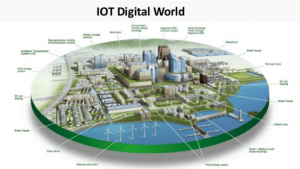 4. Army Modernization Challenge. Installations of the Future is a microcosm of overarching Army Modernization challenges. We are simultaneously invested in legacy infrastructure that we need to upgrade, and making decisions to build new smart facilities. Striking an effective and efficient balance will start with public-private partnerships to capture the expertise that exists in our universities and in industry. The expertise needed to succeed in this modernization effort does not exist in the Army. There are significant opportunities for Army Installations to participate in ongoing consortiums like the “Middle Georgia” Smart City Community and the Global Cities Challenge to pilot innovations in spaces such as energy resilience.
4. Army Modernization Challenge. Installations of the Future is a microcosm of overarching Army Modernization challenges. We are simultaneously invested in legacy infrastructure that we need to upgrade, and making decisions to build new smart facilities. Striking an effective and efficient balance will start with public-private partnerships to capture the expertise that exists in our universities and in industry. The expertise needed to succeed in this modernization effort does not exist in the Army. There are significant opportunities for Army Installations to participate in ongoing consortiums like the “Middle Georgia” Smart City Community and the Global Cities Challenge to pilot innovations in spaces such as energy resilience.
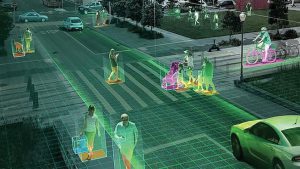 5. Technology is outpacing regulations and policy. The sensorization and available edge analytics in our public space offers improved security but might be perceived as decreasing personal privacy. While we give up some personal privacy when we live and work on Army installations, this collection of data will require active engagement with our communities. We studied an ongoing Unmanned Aerial System (UAS) support concept to detect gunshot incidents in Louisville, KY, to determine the need to involve legislatures, local political leaders, communities, and multiple layers of law enforcement.
5. Technology is outpacing regulations and policy. The sensorization and available edge analytics in our public space offers improved security but might be perceived as decreasing personal privacy. While we give up some personal privacy when we live and work on Army installations, this collection of data will require active engagement with our communities. We studied an ongoing Unmanned Aerial System (UAS) support concept to detect gunshot incidents in Louisville, KY, to determine the need to involve legislatures, local political leaders, communities, and multiple layers of law enforcement.
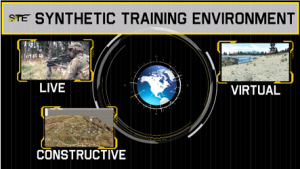 6. Synthetic Training Environment. The Installation of the Future offers the Army significant opportunities to divest itself of large brick and mortar training facilities and stove-piped, contractor support-intensive Training Aids, Devices, Simulations, and Simulators (TADSS). MG Maria Gervais, Deputy Commanding General, Combined Arms Center – Training (DCG, CAC-T), presented the Army’s Synthetic Training Environment (STE), incorporating Virtual Reality (VR), “big box” open-architecture simulations using a One World Terrain database, and reduced infrastructure and contractor-support footprints to improve Learning and Training. The STE, delivering high-fidelity simulations and the opportunity for our Soldiers and Leaders to exercise all Warfighting Functions across the full Operational Environment with greater repetitions at home station, will complement the Live Training Environment and enhance overall Army readiness.
6. Synthetic Training Environment. The Installation of the Future offers the Army significant opportunities to divest itself of large brick and mortar training facilities and stove-piped, contractor support-intensive Training Aids, Devices, Simulations, and Simulators (TADSS). MG Maria Gervais, Deputy Commanding General, Combined Arms Center – Training (DCG, CAC-T), presented the Army’s Synthetic Training Environment (STE), incorporating Virtual Reality (VR), “big box” open-architecture simulations using a One World Terrain database, and reduced infrastructure and contractor-support footprints to improve Learning and Training. The STE, delivering high-fidelity simulations and the opportunity for our Soldiers and Leaders to exercise all Warfighting Functions across the full Operational Environment with greater repetitions at home station, will complement the Live Training Environment and enhance overall Army readiness.

7. Security Technologies. Many of the security-oriented technologies (autonomous drones, camera integration, facial recognition, edge analytics, and Artificial Intelligence) that triage and fuse information will also improve our deployed Intelligence, Surveillance, and Reconnaissance (ISR) capabilities. The Chinese lead the world in these technologies today.
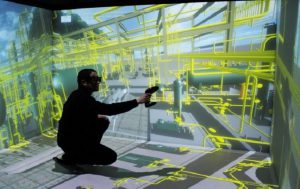
8. Virtual Prototyping. The U.S. Army Engineer Research and Development Center (ERDC) is developing a computational testbed using virtual prototyping to determine the best investments for future Army installations. The four drivers in planning for Future Installations are: 1) Initial Maneuver Platform (Force Projection); 2) Resilient Installations working with their community partners; 3) Warfighter Readiness; and 4) Cost effectiveness in terms of efficiency and sustainability.
 9. Standard Approach to Smart Installations. A common suite of tools is needed to integrate smart technologies onto installations. While Garrison Commanders need mission command to take advantage of the specific cultures of their installations and surrounding communities, the Army cannot afford to have installations going in different directions on modernization efforts. A method is needed to rapidly pilot prototypes and then determine whether and how to scale the technologies across Army installations.
9. Standard Approach to Smart Installations. A common suite of tools is needed to integrate smart technologies onto installations. While Garrison Commanders need mission command to take advantage of the specific cultures of their installations and surrounding communities, the Army cannot afford to have installations going in different directions on modernization efforts. A method is needed to rapidly pilot prototypes and then determine whether and how to scale the technologies across Army installations.
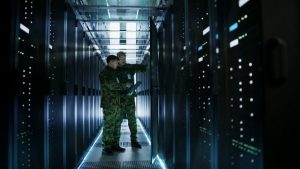 10. “Low Hanging Fruit.” There are opportunities for Army Installations to lead their communities in tech integration. Partnerships in energy savings, waste management, and early 5G infrastructure provide the Army with early adopter opportunities for collaboration with local communities, states, and across the nation. We must educate contracting officers and Government consumers to look for and seize upon these opportunities.
10. “Low Hanging Fruit.” There are opportunities for Army Installations to lead their communities in tech integration. Partnerships in energy savings, waste management, and early 5G infrastructure provide the Army with early adopter opportunities for collaboration with local communities, states, and across the nation. We must educate contracting officers and Government consumers to look for and seize upon these opportunities.
Videos from each of the Installations of the Future Conference presentations are posted here. The associated slides will be posted here within the week on the Mad Scientist All Partners Access Network site.
If you enjoyed this post, check out the following:
• Watch Mr. Richard Kidd IV discuss Installations of the Future on Government Matters.
• Read Mad Scientist Ed Blayney’s takeaways from the Installations of the Future Conference in his article, entitled We need more Mad Scientists in our Smart Cities.
• See the TRADOC G-2 Operational Environment Enterprise’s:
– The Changing Character of Future Warfare video.
– Evolving Threats to Army Installations video.
• Review our Call for Ideas winning submissions Trusting Smart Cities: Risk Factors and Implications by Dr. Margaret Loper, and Day in the Life of a Garrison Commander by the team at AT&T Global Public Sector — both are graciously hosted by our colleagues at Small Wars Journal.
• Re-visit our following blog posts: Smart Cities and Installations of the Future: Challenges and Opportunities and Base in a Box.




My ten takeaways during the seminar:
1. We must begin our discussion of installations of the future with a discussion of how the Army will fight in the future. That might have been underplayed during our discussion. We must caution against looking at future installations through the lens of modern warfighting. “Multi-Domain Battle” may not be sufficient fidelity to drive this thinking.
2. Is the Soldier still at the center of warfighting in 2050? In the future (2050), much of the Army may be robotic (autonomous). The bulk of our training base at our installations may be focused less on training people and more on training (and employing) machines. We should be mindful of this changing dynamic.
3. Advances in technology seem to be driving us AWAY from installations. Technology may reduce the need to have large concentrations of troops and equipment. We will have to take a broad view of installations in the future – and determine what functions the Army / USG performs and which functions are performed by partnerships. Installations must be viewed holistically……the entire United States is the installation. One concept might be:
4. We must distinguish between SMART making things more convenient and SMART making things better (e.g., mission effectiveness, etc.). There was a tendency to focus the bulk of our discussion on SMART instead of mission.
5. It is difficult to imagine the vision of SMART installations taking place in the current Risk Management Framework (RMF) environment. Army G6 / Network Command (NETCOM) / Defense Information Systems Agency (DISA) must be partners in this vision and assist in developing a more operationally focused cyber security framework.
6. At some point we will be so “SMART” that we have induced unacceptable risk into the system. There is probably a point of no-return with technology – and we should not take-on an all or nothing approach. Currently we do not have a method to determine this point nor do we assess the compounding risk we are assuming with technology.
7. Calling a technology or capability SMART hides the fact that it is also invasive, vulnerable, etc. At some point technology will displace enough people in the workforce that it will become socially unstable. We may have to force some positions to remain people-based. It might be that these jobs are “dull, dirty and dangerous”. Also, we must consider the political component to any changes in installations
8. We continually assume assured connectively and security when discussing advanced technologies.
Finally…two questions for further thought:
9. Is the term “garrison” still useful in thinking about installations of the future?
10. Did establishing IMCOM stymie innovation in our installations?